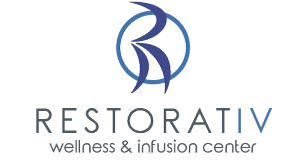There are few conditions that modern medicine cannot cure. Complex Regional Pain Syndrome is one of those incurables. This painful condition develops as a result of a damaged peripheral and central nervous system after an injury. It can also develop after other serious conditions, like heart attacks and strokes, though infrequently. The men and women who develop CRPS are forced to endure waves of chronic pain that radiate out from one or more of their previously injured limbs.
There are two types of CRPS:
- Type 1: Also known as reflex sympathetic dystrophy syndrome (RSD). This typically develops following an illness or injury that does not initially affect the limb’s nerves.
- Type 2: Also known as causalgia. Pain develops after nerve damage occurs in the limb.
Those who suffer from CRPS usually experience the following symptoms:
- Skin color changes
- Skin swelling
- Nail or hair growth changes
- Limited movement
Traditional treatments for this condition are limited, and only relatively effective. Given that the condition’s root cause is still unknown, the typical treatment options oftentimes fail to treat pain symptoms. Some of these treatment options include:
- Oral pain relievers
- Steroid injections
- Transcutaneous electrical nerve stimulation (TENS)
- Physical therapy
- Neuromodulation
The efficacy of each treatment varies based on the patient, and the severity of their CRPS. In some severe cases, these treatments become completely ineffective at relieving any pain. As a result, many have turned to ketamine infusions—an effective alternative. Due to the way it blocks NMDA nerve cell receptors, the pain signals caused by the CRPS never reach their destination, thereby providing relief. This is a dramatic improvement from the torture that CRPS patients are otherwise forced to endure, endlessly.
The average ketamine infusion for chronic pain can last for up to 3- 4 hours. The intravenous treatment is administered at a ketamine clinic, and most usually requires completing a survey before and/or after each infusion in order to measure its effectiveness. Patients receive 4-6 serial infusions over the course of two to four weeks, with maintenance infusions on an as needed basis after that.
Contact RestoratIV Wellness
If you are interested in learning more about ketamine infusions, and to discover if you are a candidate for these life-changing treatments, please contact our professional staff. We are here to help you start your journey towards wellness.


Recent Comments